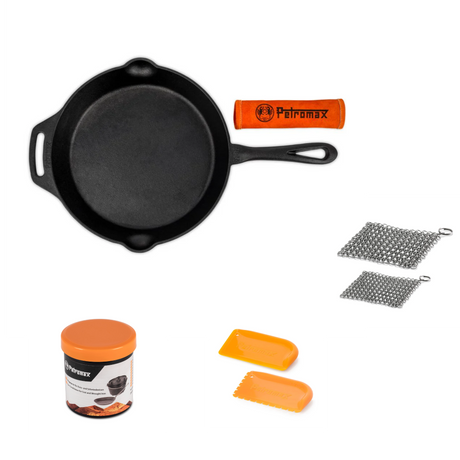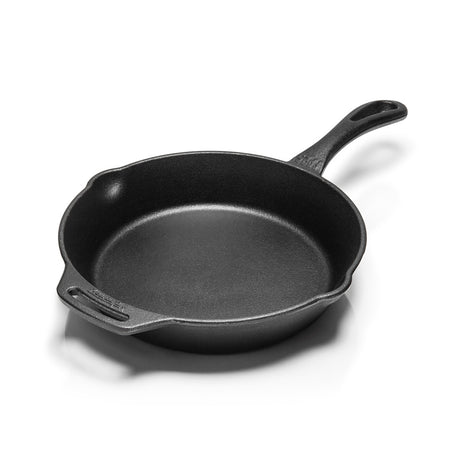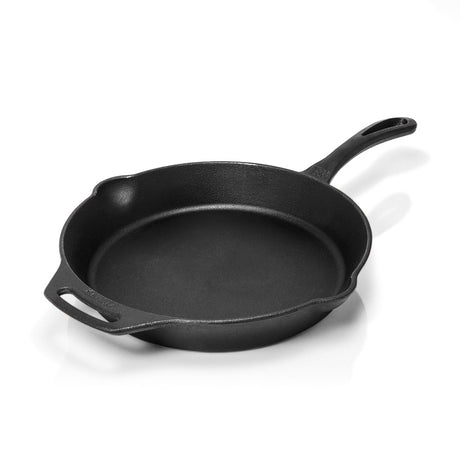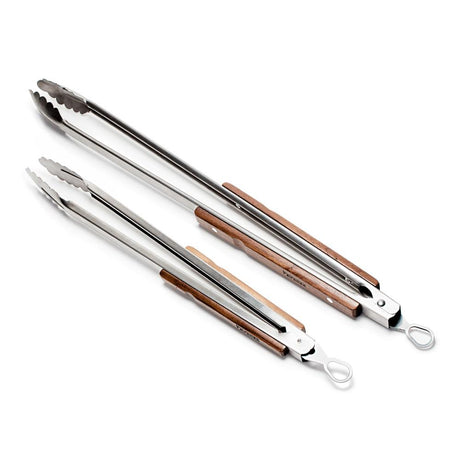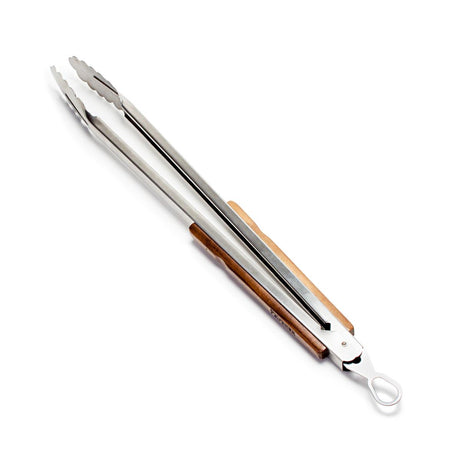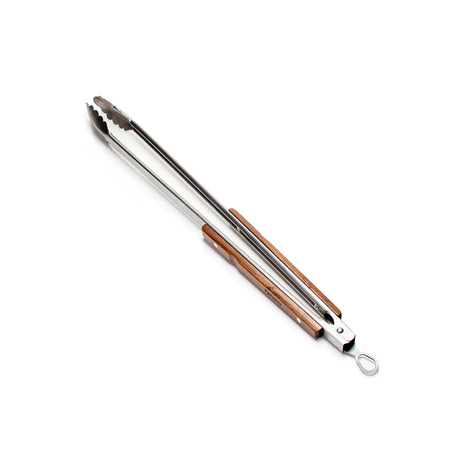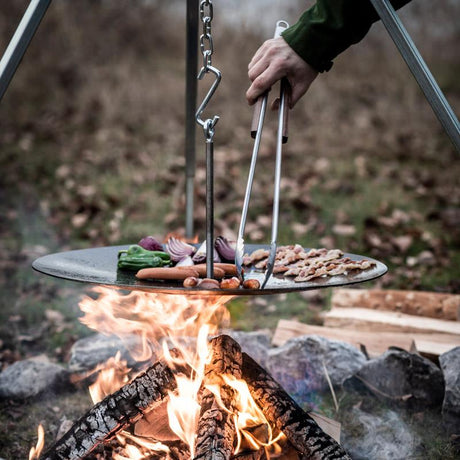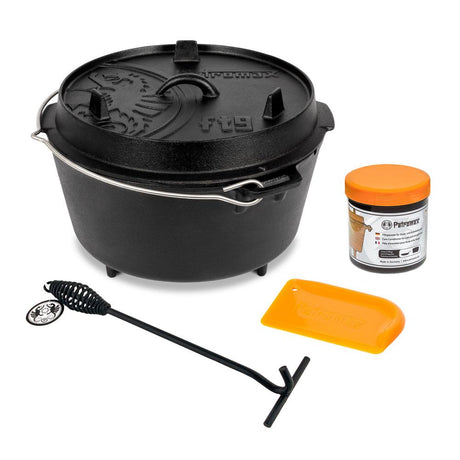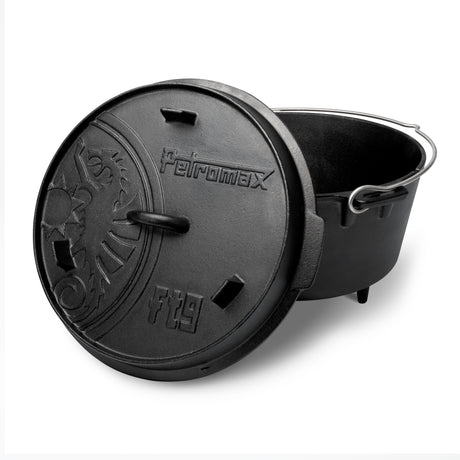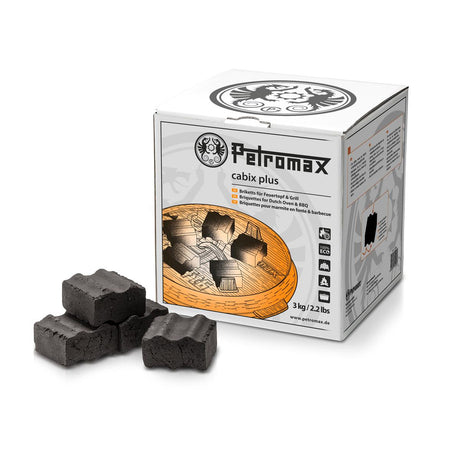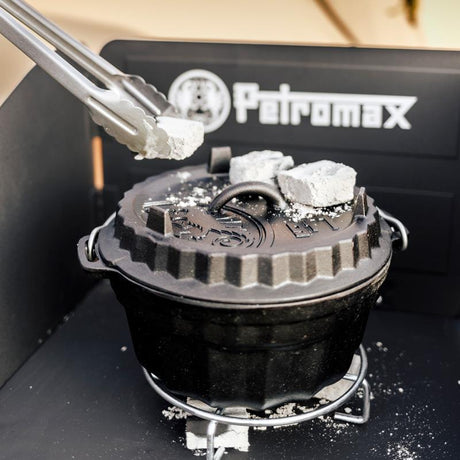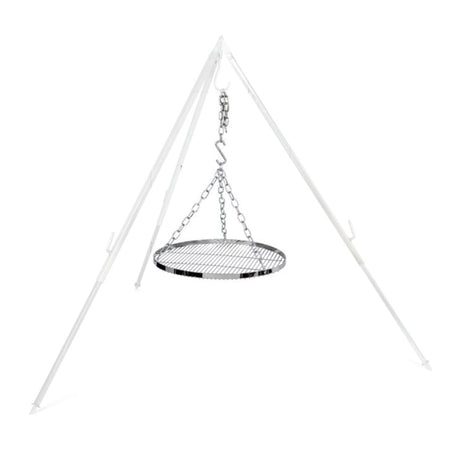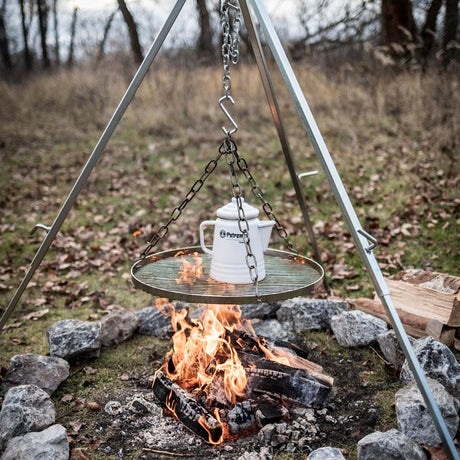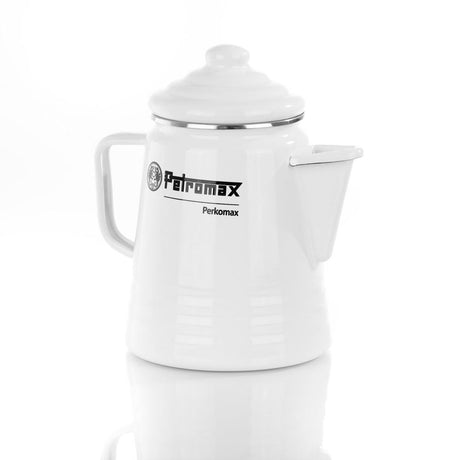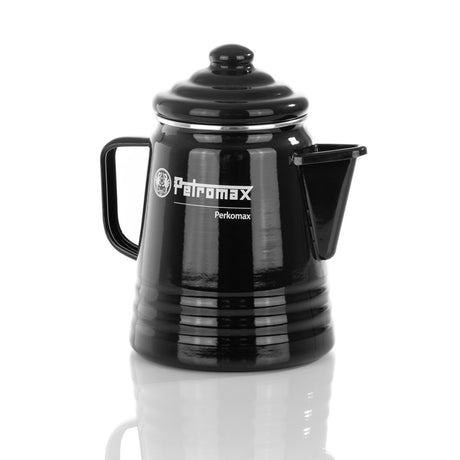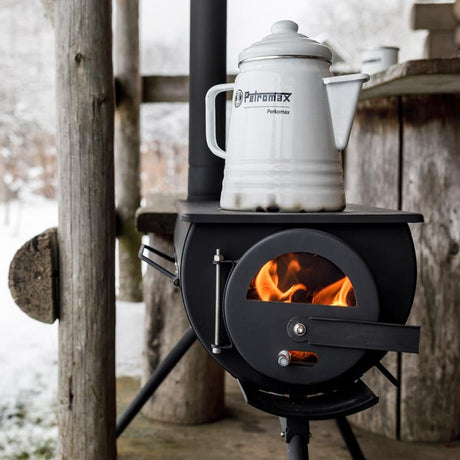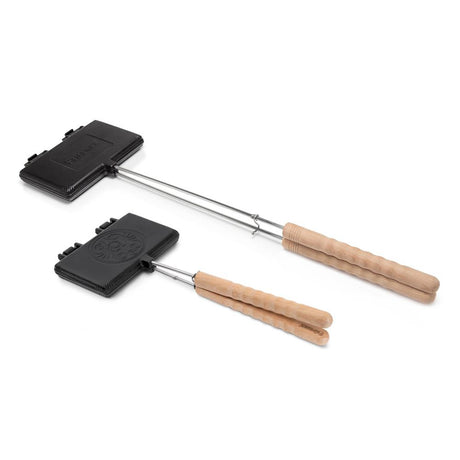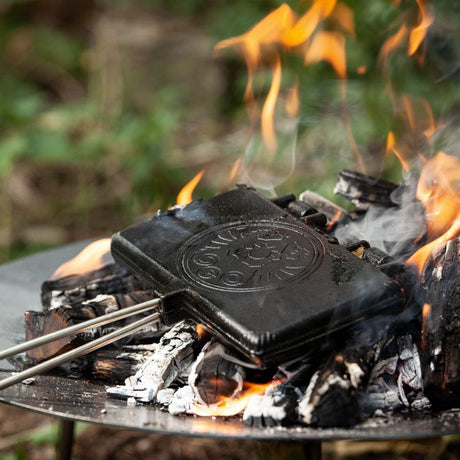Imagine this: You wake up, the morning sun is gently shining through the tent canvas, birds are chirping around you and the only thing you're missing is a damn good coffee. Sounds like camping paradise, doesn't it? But how do you actually make a perfect cup of coffee in the middle of nature without a professional coffee machine? In this blog post, we'll show you all the methods, devices and tricks you need to get your coffee kick outdoors.
Table of contents
What equipment do I need for perfect coffee when camping?
5 methods for making coffee while camping
Making coffee without electricity: tips and tricks
Which coffee powder is best for camping?
The best tips for the perfect taste on the go
Conclusion
What equipment do I need for perfect coffee when camping?
The basic equipment for the perfect camping coffee must meet two key criteria: It should be lightweight and robust. Every gram counts when hiking, and every bump can damage sensitive equipment. That's why experienced campers rely on materials such as stainless steel, high-quality aluminum alloys or modern, shatterproof plastics.
The basis of your coffee camping equipment is formed by a few core products that you can combine individually. A hand filter, for example, weighs barely more than 50 grams and takes up almost no space. A French press made of stainless steel is a little heavier, but provides excellent coffee for several people. The AeroPress has established itself as an absolute insider tip among outdoor coffee makers - small, light and incredibly versatile.
In addition to the actual preparation device, you need a reliable kettle. We recommend compact gas stoves or multi-functional camping stoves that not only heat water but are also suitable for cooking. Make sure they are lightweight and have a robust design.
Don't forget the coffee storage: airtight, small containers protect your beans or ground powder from moisture and oxidation. For longer trips, it's even worth using a small, lightweight hand grinder to grind your beans fresh - the difference in taste is remarkable.
Important equipment for your coffee enjoyment:
- Coffee maker
- French press
- AeroPress
- Hand filter
- Percolator
- Kettle or camping stove
- Coffee mug (preferably multi-functional)
5 methods for making coffee when camping
Every camper has their own preferences for making coffee. Each method has its own charm as well as advantages and disadvantages. If you discover the right technique for you, you can conjure up a remarkable coffee even in the most remote corners of the world.

French press: uncomplicated and versatile
The French press is more than just a coffee preparation device - it is a true cultural asset for all outdoor enthusiasts. Originally developed in France, it has established itself worldwide as a robust solution for coffee lovers who value a full-bodied taste.
The principle is very simple: coarsely ground coffee is placed in the press plunger and hot water is poured over it. After four minutes of infusion, the metal filter is slowly pressed down, retaining the coffee sediment. The result is an intense coffee with all the oils and aromas that a paper filter normally retains.
For campers, the French press offers decisive advantages: it is robust, does not require paper filters and can be cleaned quickly and easily. With models made of stainless steel or high-quality aluminum, it is ideal for outdoor adventures.
Instructions:
- Place coarsely ground coffee in the press plunger
- Pour in hot water (approx. 94-96°C)
- Leave to infuse for 4 minutes
- Slowly press the press plunger down
- Enjoy!
Advantages:
- No paper filter required
- Easy to clean
- No power connection required
AeroPress: The compact machine for coffee enthusiasts
For those who love precision and experimentation, the AeroPress is the perfect companion. Developed by an inventor who wanted to revolutionize coffee preparation, it is now the favourite of many coffee enthusiasts.
The way it works is similar to a syringe: coffee is pressed through a fine filter, resulting in a particularly clear and full-bodied drink. The time saved is considerable - the coffee is ready in less than two minutes. The device also weighs less than 250 grams and fits in any backpack compartment.
Flexibility is its second name: depending on the grind, water quantity and pressure level, a wide variety of coffee styles can be created - from intense espresso to mild filter coffee.
Step-by-step instructions:
- Insert the filter into the filter holder
- Fill with ground coffee
- Add hot water
- Stir briefly
- Press through the filter with pressure
Highlights:
- Extremely light (less than 250g)
- Quick preparation (less than 2 minutes)
- Easy to clean
- Produces less deposits
Hand filter and paper filter: classic and uncomplicated
The hand filter represents the essence of traditional coffee preparation. For generations, coffee lovers have appreciated this method for its simplicity and precision. In a camping context, the hand filter proves to be an extremely practical companion that requires little equipment but promises maximum taste.
The principle is very simple: a paper filter is clamped into a special filter holder, filled with freshly ground coffee and then hot water is slowly poured over it. The art lies in the circular, even pouring, which ensures that the coffee is optimally extracted. Every drop should wet the coffee grounds evenly to guarantee a balanced taste experience.
The hand filter is a blessing, especially for campers with minimalist requirements. It weighs hardly anything, takes up minimal space and is easy to dispose of after use. The modern versions made from lightweight materials such as plastic or silicone are virtually unbreakable and perfect for outdoor adventures.
Procedure:
- Insert the paper filter into the filter holder
- Pour in the ground coffee
- Pour hot water slowly and in a circular motion over the coffee
- Allow to drip and enjoy
Recommendations:
- Make sure the filter is the right size
- Use reusable filters if possible
- Ideal for 1-2 people
Percolator: The classic for camping enthusiasts
The percolator embodies the soul of camping coffee par excellence. It is reminiscent of times when outdoor enthusiasts celebrated their coffee rituals directly over the campfire. This robust coffee pot is more than just a utility item - it is a piece of camping culture.
The way it works is fascinating: water in the lower container heats up and rises through an integrated pipe, where it drips over the coffee strainer. This process is repeated until the coffee reaches the desired strength. Traditional percolators made of stainless steel or aluminum are indestructible and can withstand any challenge.
The percolator is a particular highlight at group camps. It produces large quantities of coffee and often becomes the social hub around which the campers gather. The characteristic bubbling and the intense smell of coffee are among the unforgettable moments of camping life for many.
How it works:
- Pour water into the bottom container
- Pour coffee powder into the sieve attachment
- Place on the camping stove or campfire
- Bring the coffee to the boil
- Remove from the fire and serve
For the perfect outdoor coffee, we naturally recommend our Petromax Perkomax!
Instant coffee: The quick alternative for minimalists
Instant coffee is the joker among coffee methods. It offers a practical solution for anyone who wants to reduce weight and effort to a minimum. Modern instant coffees no longer have anything to do with the bland-tasting powder of the past.
High-quality instant coffees are now produced using complex processes that preserve the aroma and taste almost completely. The coffee aromas are preserved by freeze-drying or spray-drying and can be easily reactivated later with hot water.
For long-distance hikers, mountaineers or minimalists, instant coffee is often the only practical solution. A packet weighs just a few grams and hardly takes up any space. With little tricks such as adding condensed milk or a pinch of cinnamon, the taste can be significantly enhanced.
Tips for improvement:
- Choose high-quality instant coffee
- Infuse with hot water
- Optional: Make it creamier with condensed milk
- Add spices such as cinnamon or cardamom
Benefits:
- Extremely easy to transport
- No additional equipment required
- Quick preparation
Making coffee without electricity: tips and tricks
The challenge of brewing coffee without an electrical infrastructure is part of the adventure for many campers. Modern equipment and centuries-old techniques make it possible to enjoy excellent coffee even in the most remote natural regions.

Camping stoves as a lifesaver
Gas stoves have established themselves as the most reliable solution for mobile coffee preparation. These compact appliances are true all-rounders: small enough to fit in any rucksack, powerful enough to boil water quickly. Modern models often weigh less than 300 grams and only require a small gas cartridge to function reliably.
Advantages:
- Compact and lightweight
- Quickly ready for use
- Independent of power sources

Coffee by the campfire: the authentic method
For many campers, however, the campfire remains the most romantic method of making coffee. Here, coffee culture merges with the experience of nature. A cast-iron percolator on an open fire is more than just a kitchen utensil - it is part of an age-old tradition of camping life. The art lies in controlled heating: The water must not boil, but should be heated gently so as not to burn the delicate coffee aromas.
A few basic rules are important here: The base must be stable and the heat must be evenly distributed. A stacking grid made of high-quality cast iron can work wonders here. It distributes the heat evenly and ensures controlled coffee extraction. Professionals know: The temperature is crucial. Between 94 and 96 degrees Celsius is the optimum temperature for perfect coffee extraction.
Recommended accessories:
- Robust metal percolator
- Cast iron stacking grid from Petromax
- Fireproof pot
Tips for perfect campfire coffee:
- Choose a stable base
- Ensure even heat distribution
- Avoid direct fire under the coffee pot
- Don't let the coffee boil for too long
Important: Always prepare your coffee utensils to be fireproof!
Coffee for minimalists
For minimalists, there are also alternatives without additional cooking utensils. The cold brew method makes it possible to prepare coffee without heat. The coffee is steeped in water overnight. The result is a smooth, less acidic coffee - perfect for hot summer days.
The choice of the right method depends heavily on the individual camping style. The long-distance hiker will have different priorities than the camper with a motorhome. Flexibility and a willingness to experiment are the key to the perfect camping coffee.
No electricity connection? No problem! With the right methods and equipment, you can make your favorite coffee without electricity.

Which coffee powder is best for camping?
Choosing the right coffee is crucial for an unforgettable taste experience in the great outdoors. There are significant differences between whole bean and ground coffee that present every camper with choices.
Whole beans vs. ground
Whole beans offer the unbeatable advantage of maximum freshness. As soon as coffee is ground, an oxidation process begins that quickly degrades the aromas. So if you value the highest quality coffee, transport a small hand grinder and grind the beans directly before preparation. This method guarantees a taste experience that goes far beyond the standard.
Ground coffee, on the other hand, is the solution for those who want to minimize weight and complexity. Modern packaging technologies make it possible to keep coffee fresh for a long time. Vacuum-packed or inert gas-filled packs can preserve coffee flavors for weeks.
| Whole beans: | Ground: |
|
|
Grinding and storage
The grind size plays a decisive role: the French press requires a coarser-grained coffee, while the AeroPress can handle a medium-ground coffee. A hand filter works best with a medium grind. These nuances make the difference between good and outstanding coffee.
When choosing, you should look for roasts that are robust and full of flavor. Medium-dark roasts are ideal for camping, as they are less sensitive to fluctuations in water quality and preparation methods. Coffees from countries such as Brazil, Colombia or Ethiopia usually offer a good balance between taste and compatibility.
Storage is at least as important as the selection. Airtight, opaque containers protect your precious beans from moisture and oxidation. Modern camping coffee lovers invest in small vacuum containers that add hardly any weight but guarantee maximum freshness.
Choosing the right coffee can make the difference between a good and an outstanding camping coffee.
Ideal grinds:
- French Press: Coarse grind
- AeroPress: Medium to fine
- Hand filter: Medium
Storage tips:
- Use airtight containers
- Store in a cool, dark place
- Take small portions with you
- Protect from moisture
Recommendations
- Roasts with medium intensity
- Prefer beans from sustainable cultivation
- Experiment with different varieties
The best tips for the perfect taste on the go
Water quality and temperature
The secret of an outstanding camping coffee lies in details that go far beyond the preparation method alone. Water, the often overlooked component, plays a crucial role in flavor.
Water quality is more than just a theoretical construct. Mineral content, purity and temperature have a decisive influence on the taste experience. Mountain spring water is considered ideal - naturally filtered, with a balanced mineral composition. Where this is not possible, coffee experts recommend the use of filtered drinking water.
The optimum water temperature is precisely between 94 and 96 degrees Celsius. Water that is too hot burns the sensitive coffee aromas, while water that is too cool does not extract them completely. A digital thermometer can help to achieve this precision at first. Over time, however, you will develop a feeling for the right temperature.
Not all water is the same:
- Use clean, clear water
- Ideal temperature: 94-96°C
- Avoid mineral water with a strong taste of its own
- Mountain spring water or filtered water are ideal
Dosage and freshness
Dosing is a science in itself. The rule of thumb of 60 to 70 grams of coffee per liter of water is a good starting point. However, individual preferences and preparation methods require adjustments. Campers who like to experiment will find their personal gold standard through continuous trial and error.
Freshness is the decisive factor. Coffee should not be older than two weeks after roasting. Modern packaging technologies help to preserve aromas, but nothing comes close to freshly roasted beans. If you have the opportunity, you should bring coffee from local roasters.
Storage during the journey deserves special attention. Airtight, opaque containers protect against moisture and oxidation. Avoid direct sunlight and extreme temperature fluctuations. A small, compact coffee transport container can work wonders.
Perfect amount of coffee:
- Standard rule: 60-70g of coffee per liter of water
- Adjust according to taste
- Freshness is crucial - maximum 2 weeks after roasting
Additional professional tips
- Protect coffee from moisture and sunlight
- Use small storage containers
- Take a coffee grinder with you for maximum freshness
- Experiment and find your own favorite style

Conclusion: coffee as an adventure
Coffee while camping is a ritual, an experience and a pleasure at the same time. Every preparation method tells its own story, every sip is a moment of connection with nature.
The art of camping coffee lies in the balance between pragmatism and passion. Whether French press, AeroPress, hand filter or percolator - the joy of experimentation is what counts. No two camping coffees are the same, and that is precisely what makes them so fascinating.
Openness and a willingness to experiment are more important than technical perfection. A little improvisation, a feel for quality and the willingness to learn from mistakes make the perfect camping coffee. The best stories are often not created by elaborate equipment, but by unexpected moments.
Sustainability is playing an increasingly important role. Choosing high-quality, durable equipment and coffee from regional roasters not only contributes to a better taste experience, but also to environmental protection.
The perfect camping coffee is more than just a drink - it's part of the adventure. Don't be discouraged by a lack of infrastructure. With the right tips and tricks, you won't miss out on your coffee enjoyment even in the wilderness!
Cheers and good coffee - out in the wild!
Your camping coffee success formula:
- Choose a preparation method that suits your camping style
- Invest in compact, robust equipment
- Pay attention to coffee quality and freshness
- Experiment and find your personal favorite method
Quick tips to take with you:
- French press for groups
- AeroPress for coffee nerds
- Percolator for the traditionalist
- Hand filter for minimalists
- Instant coffee as a backup
Can't do without good coffee on the go? Take a look at our other posts and find out which preparation methods and devices are perfect for outdoor adventures!
Perfect coffee on the go: with the percolator
Petromax recipes: Chai latte from the percolator
Cast iron vs. stainless steel: Which material is better for outdoor cooking?








